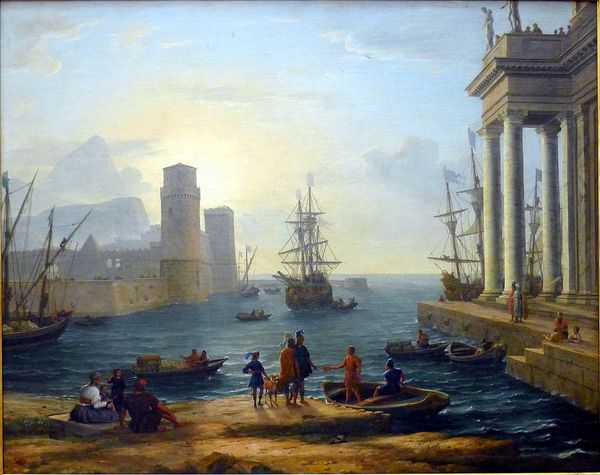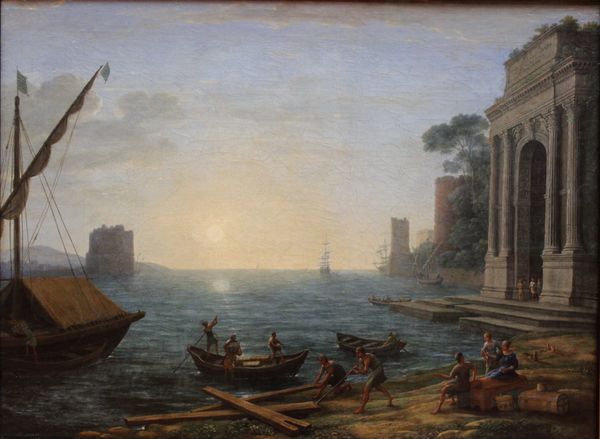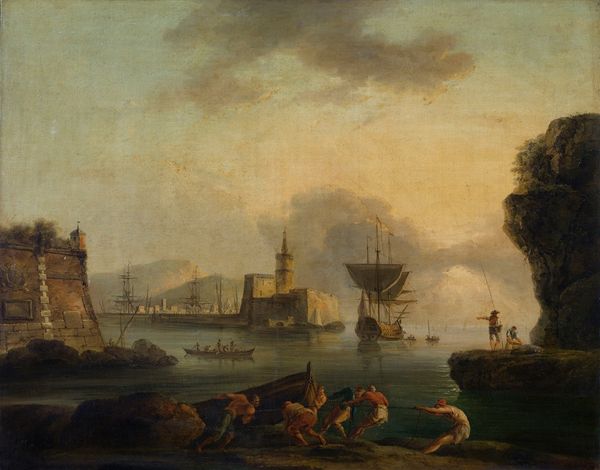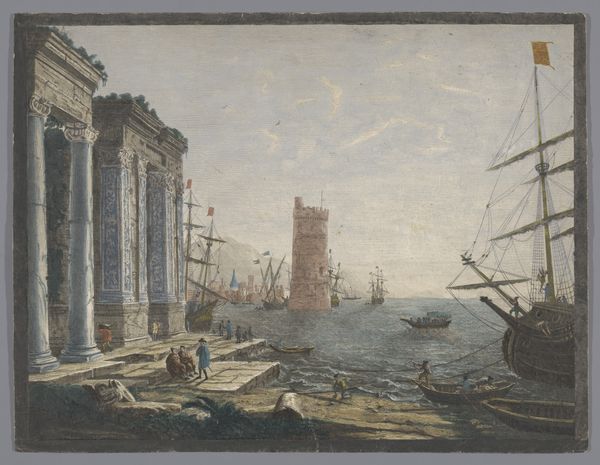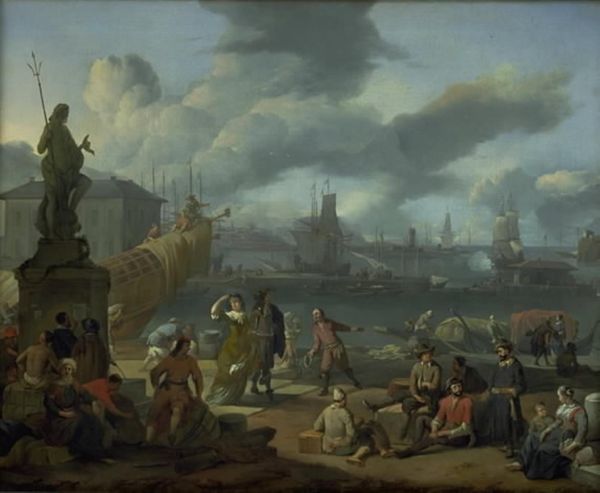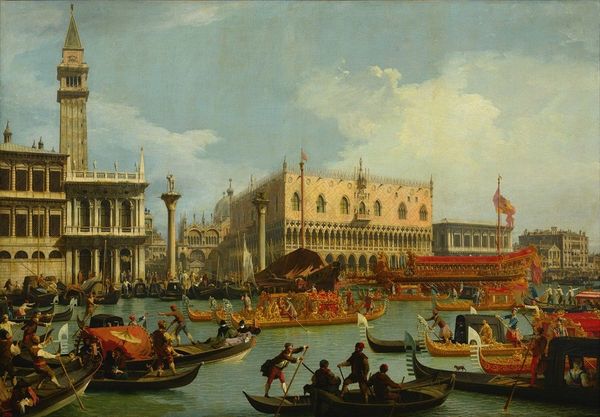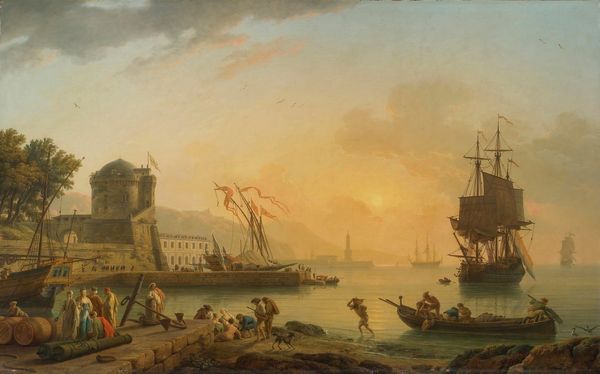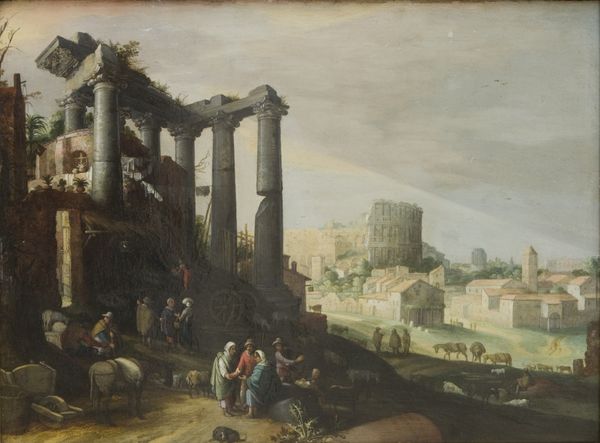
oil-paint
#
allegory
#
baroque
#
ship
#
oil-paint
#
greek-and-roman-art
#
landscape
#
classical-realism
#
figuration
#
romanesque
#
oil painting
#
roman-mythology
#
mythology
#
cityscape
#
history-painting
Dimensions: 150 x 119 cm
Copyright: Public domain
Editor: This is "Ulysses Returning Chryseis to her Father" by Claude Lorrain, painted in 1644, an oil on canvas, now at the Louvre. It feels very stage-like to me, like a tableau vivant with the buildings and ships framing the figures. What strikes you when you look at this painting? Curator: The most compelling aspect is the structural arrangement of the pictorial space. Observe how Lorrain has meticulously orchestrated a system of receding planes. The foreground figures, rendered in relatively sharp detail, anchor the composition, leading the eye inward. Then, there are intermediate structures with boats and architectural facades that provide a transitional passage. Editor: Yes, there are clear divisions! Curator: Absolutely, and further accentuated by the aerial perspective—the gradual lightening of tones and blurring of details—as the composition unfolds into the background. The strategic placement of light, particularly how it catches the crests of the waves and illuminates the classical structures, plays a critical role here. The golden-hour light suggests an atmosphere of classical serenity. What purpose do you believe these stark contrasts of light and shade serve in the broader scheme? Editor: Maybe it's a technique to emphasize the themes of classical art in architecture. Do you think the Romanesque features enhance a sense of the theatrical, turning the event into more than just the return of Chryseis? Curator: An astute observation. The composition serves to elevate a narrative, transmuting it into a discourse on civilization, order, and the sublime power of nature integrated with humanity's achievements. We witness how the material properties and their organization can lead us to discern layered artistic meanings. Editor: I hadn't thought about how the material elements contributed to the overall narrative. Thank you, this was insightful. Curator: The structural design is critical. Considering it, we find a deeper understanding of art.
Comments
No comments
Be the first to comment and join the conversation on the ultimate creative platform.
